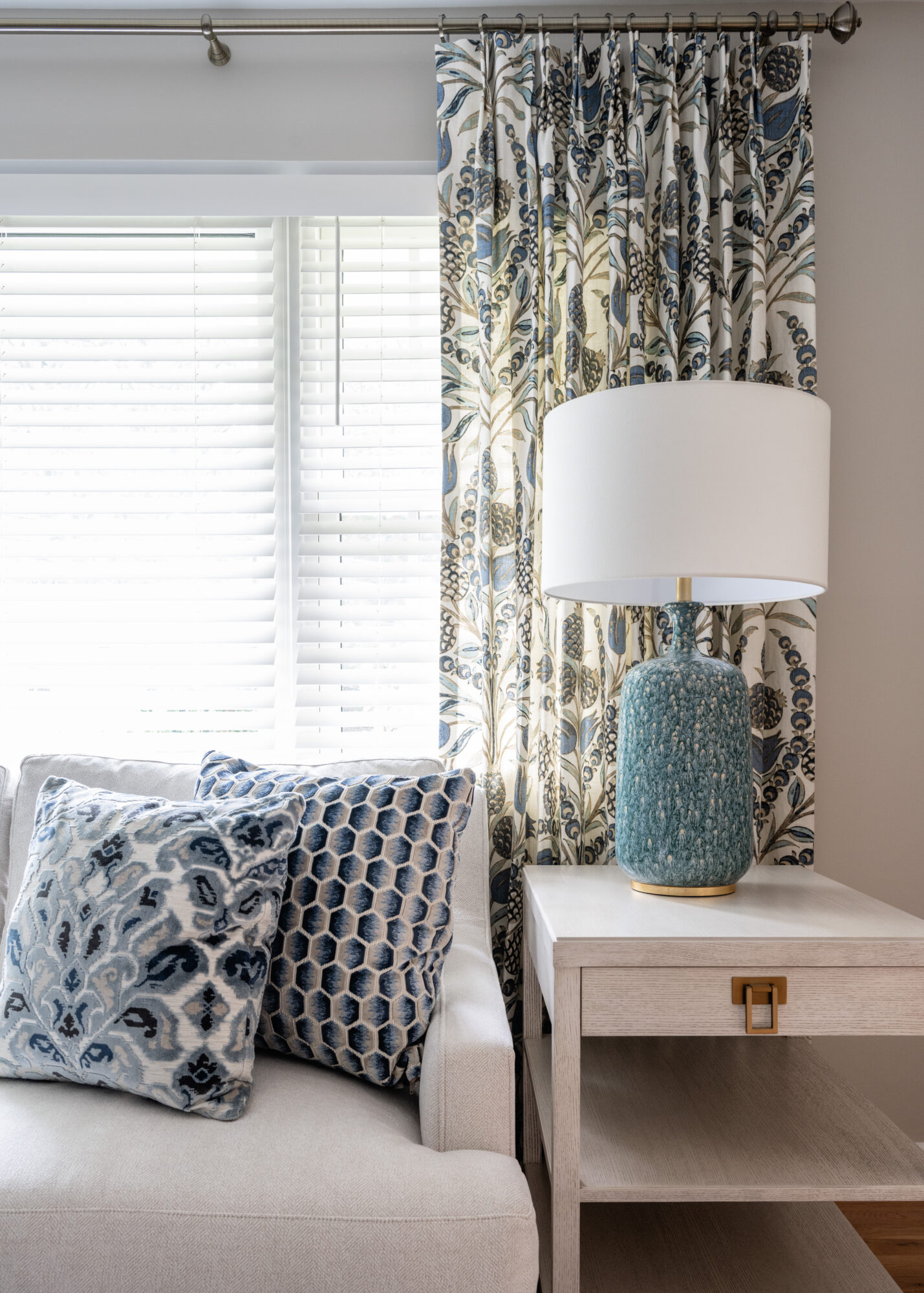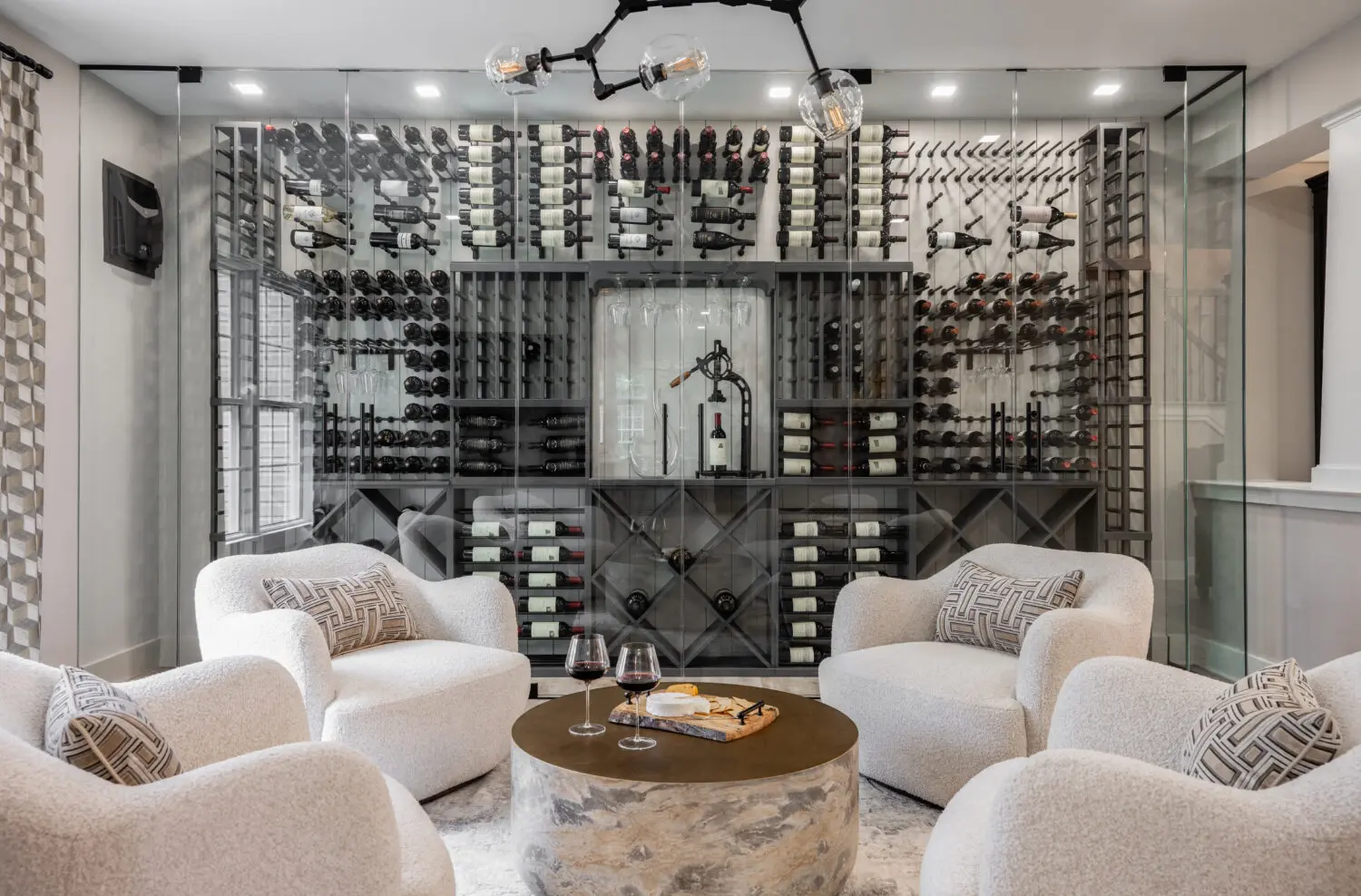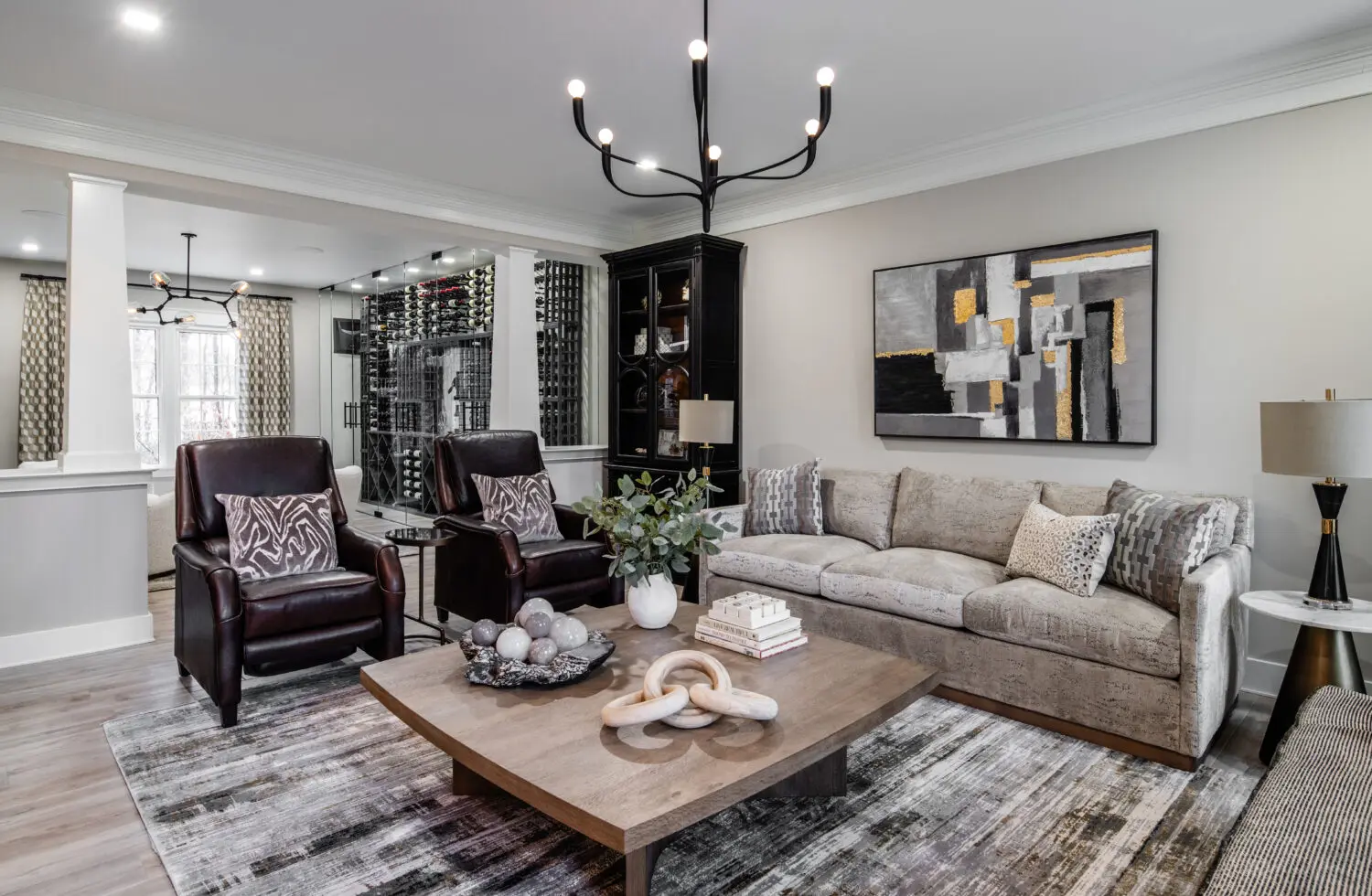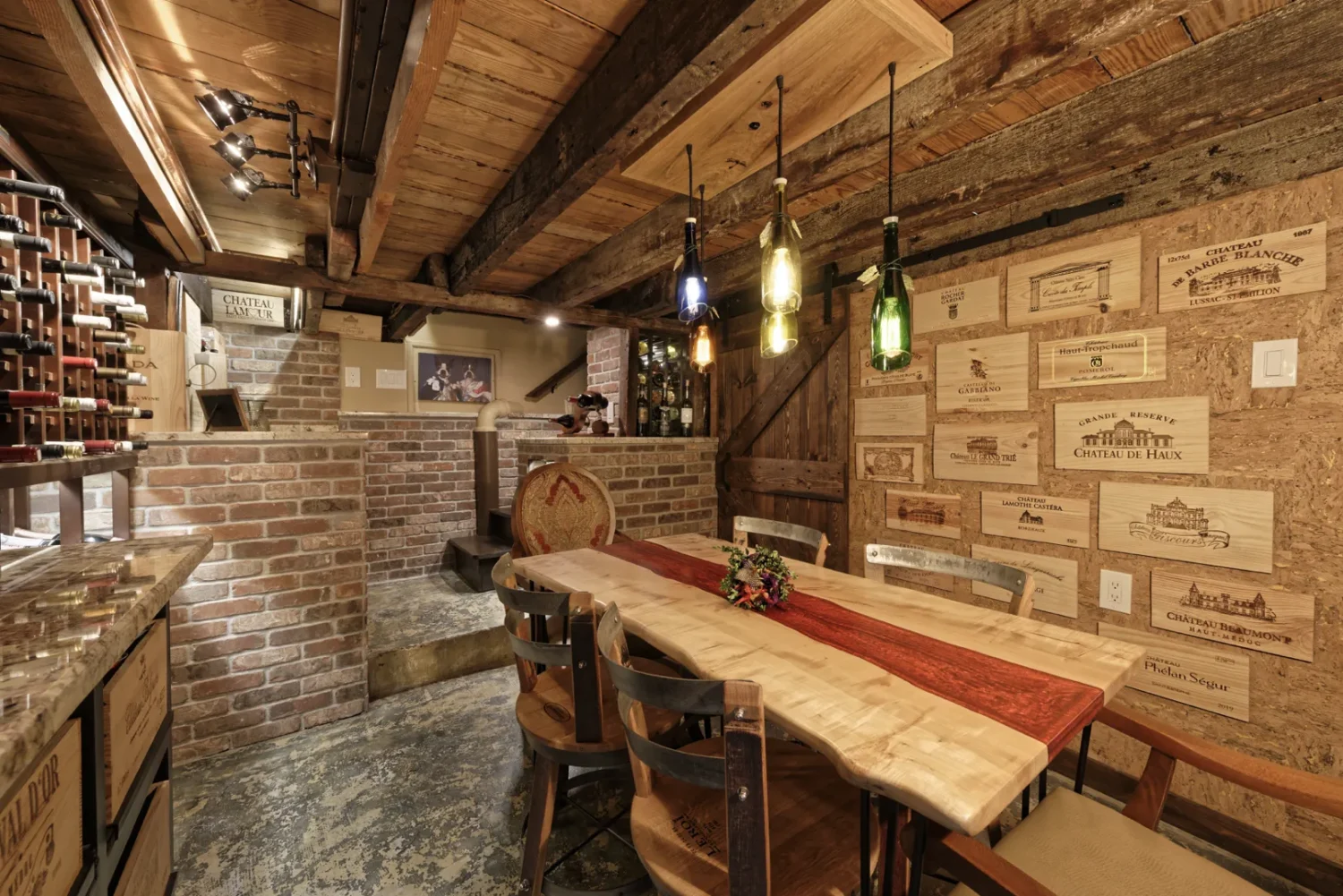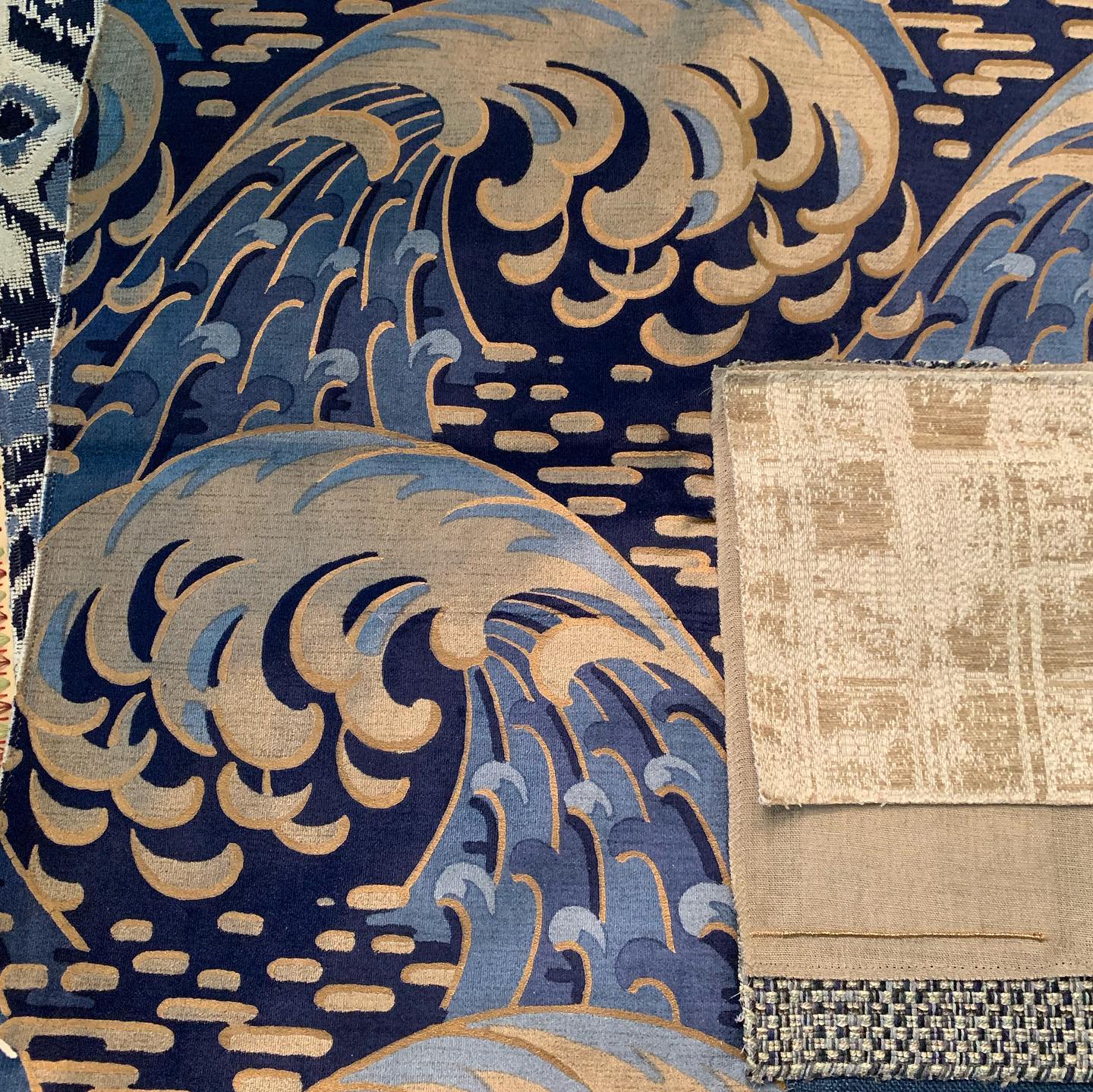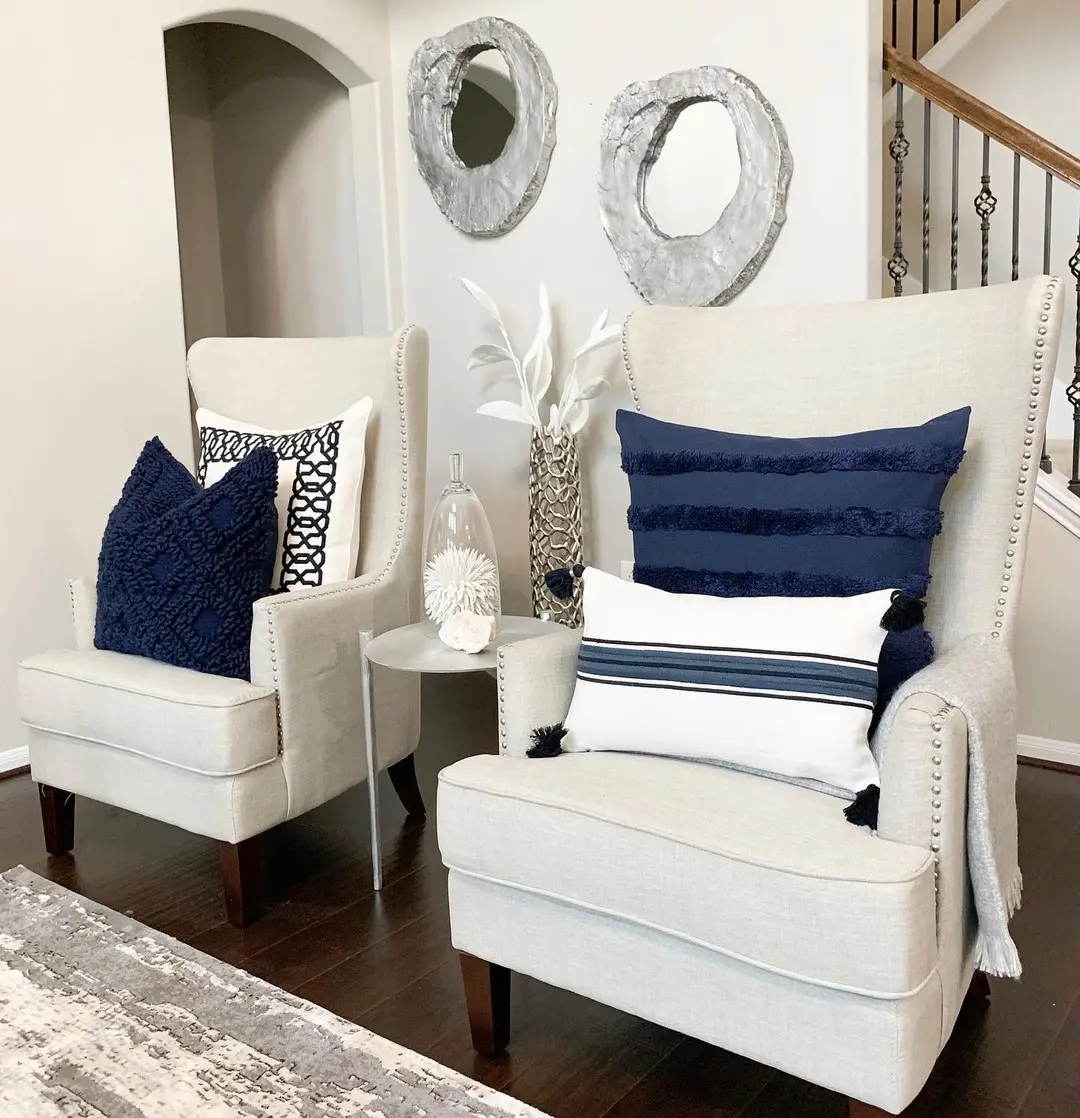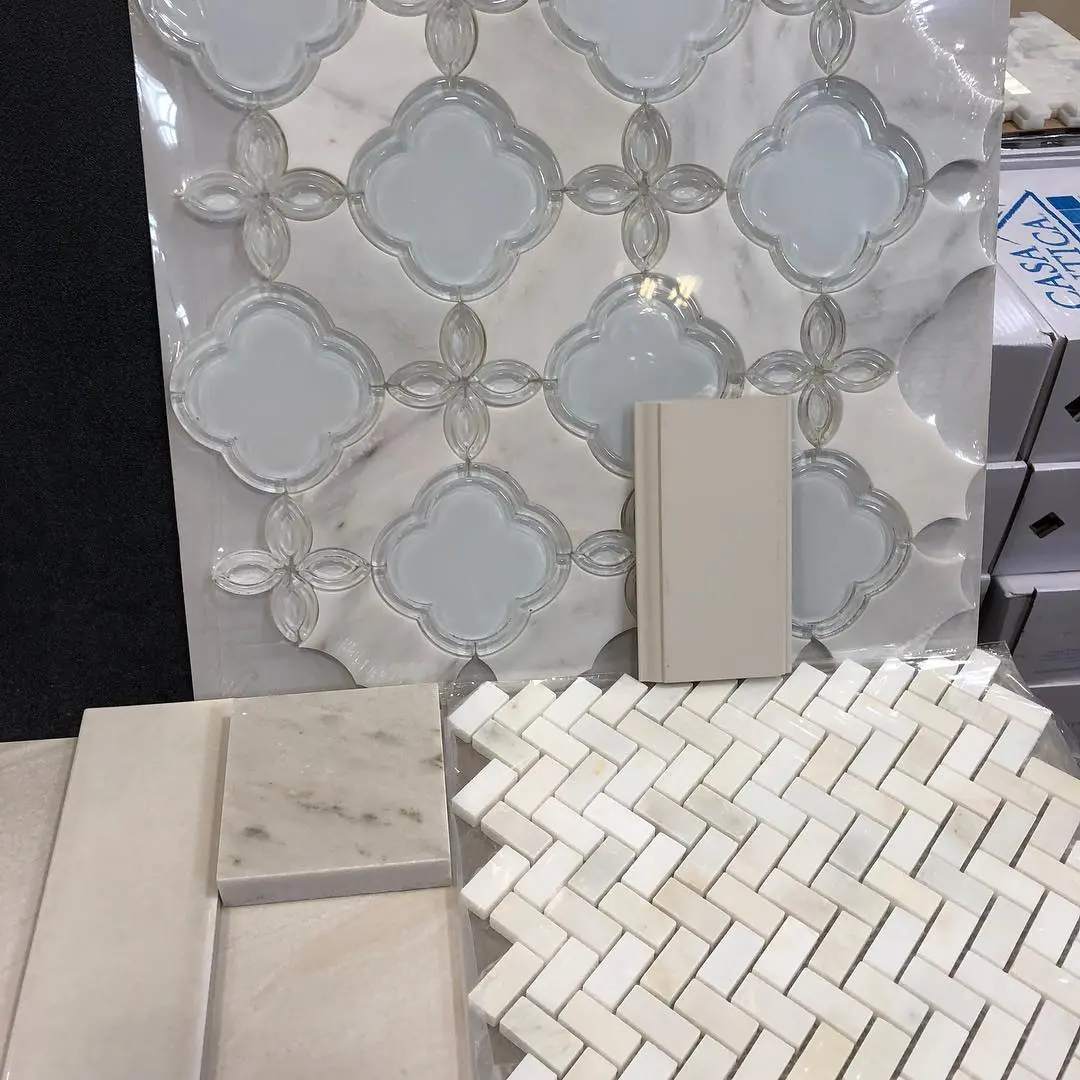Transform Your Northern Virginia Property into a High-Performing Asset with Expert Design Insights
In the fast-evolving world of property management, savvy owners are discovering that interior design isn’t just about aesthetics—it’s becoming their secret weapon for maximizing rental income, reducing tenant turnover, and building long-term property value. As we move through 2025, the intersection of cutting-edge design trends and property management strategy is creating unprecedented opportunities for property owners who understand how to leverage these powerful tools.
Think of your property like a smartphone. Just as Apple doesn’t just sell a phone but an entire ecosystem of features, connectivity, and user experience, today’s most successful rental properties aren’t just offering four walls and a roof—they’re providing a complete lifestyle experience that tenants are willing to pay premium prices for. The difference? Strategic interior design choices that align with what modern renters actually want and need.
How Technology-Integrated Design is Revolutionizing the Rental Experience
The integration of smart home technology with thoughtful interior design is transforming how tenants interact with their living spaces. Property managers who embrace AI-powered automation and smart home features are discovering that these investments pay dividends in both tenant satisfaction and operational efficiency.
Smart home automation has moved beyond simple convenience to become a comprehensive property management tool. Imagine a rental property where smart thermostats learn tenant preferences and automatically adjust temperature settings to optimize comfort while minimizing energy costs. Smart lighting systems that respond to natural light patterns not only create a more pleasant living environment but also reduce utility bills—a win-win for both property owners and tenants.
The key is understanding that today’s renters, particularly in Northern Virginia’s competitive market, expect seamless technology integration. They want smart locks that eliminate the hassle of physical keys, automated climate control that adapts to their schedules, and integrated security systems that provide peace of mind. Properties that offer these features command higher rental rates and experience significantly lower vacancy periods.
From a design perspective, successful smart home integration requires careful planning. The technology should feel invisible and intuitive, not overwhelming or complicated. This means choosing sleek, modern fixtures that complement the overall aesthetic while providing maximum functionality. Property owners who work with experienced interior designers understand that the goal isn’t to showcase technology for its own sake, but to create spaces where technology enhances the living experience seamlessly.
The Sustainability Revolution: Why Eco-Friendly Design Drives Premium Pricing
Sustainability has evolved from a nice-to-have feature to a must-have differentiator in the rental market. Properties that incorporate eco-friendly materials and energy-efficient design elements are not only attracting environmentally conscious tenants but are also commanding premium rental rates and experiencing higher tenant retention.
The appeal of sustainable design goes far beyond environmental consciousness—it’s about creating healthier, more comfortable living spaces that also reduce operational costs. Reclaimed wood flooring, low-VOC paints, and energy-efficient lighting create interiors that feel warm and inviting while promoting better indoor air quality. These features directly impact tenant satisfaction and health, leading to longer lease terms and fewer maintenance issues.
Water-saving fixtures and advanced leak detection systems represent another area where sustainable design meets practical property management. These features reduce utility costs, prevent costly water damage, and demonstrate to tenants that the property is well-maintained and forward-thinking. Properties that integrate these sustainable elements often see utility cost reductions of 20-30%, savings that can be reinvested into additional property improvements or passed along to tenants as competitive pricing.
Energy-efficient appliances and automated climate control systems don’t just reduce environmental impact—they create a more comfortable living experience while significantly lowering monthly utility bills. In Northern Virginia’s competitive rental market, properties that can offer lower total monthly costs (rent plus utilities) have a distinct advantage in attracting and retaining quality tenants.
Biophilic Design: Creating Nature-Inspired Spaces That Tenants Love
The growing emphasis on wellness and mental health is driving unprecedented demand for biophilic design elements in rental properties. Biophilic design—which intentionally connects occupants to nature through features like indoor gardens, living walls, large windows for natural light, and organic materials—is proving to be one of the most effective ways to increase property value and tenant satisfaction.
Research consistently shows that spaces incorporating natural elements reduce stress, improve air quality, and enhance overall well-being. For property owners, this translates into tangible benefits: tenants are more likely to renew leases, take better care of the property, and recommend it to friends and colleagues. Properties with biophilic design elements typically experience 15-25% higher tenant retention rates compared to traditional rentals.
The implementation of biophilic design doesn’t require massive renovations or expensive features. Simple additions like large windows that maximize natural light, indoor plants or living walls, and natural materials like stone or wood accents can dramatically transform a space’s appeal. Even elements like water features or natural color palettes inspired by outdoor environments can create the connection to nature that modern renters crave.
In Northern Virginia’s urban and suburban markets, properties that successfully integrate outdoor living spaces with indoor environments are particularly sought after. Balconies, patios, or garden areas that feel like natural extensions of the interior living space create a sense of expanded square footage and lifestyle value that tenants are willing to pay premium prices for.
Flexible, Multi-Functional Spaces: Adapting to Modern Lifestyle Needs
The shift toward remote work and flexible lifestyles has fundamentally changed how people use their living spaces. Properties that incorporate flexible, multi-functional design elements are experiencing higher demand and can command premium rental rates by offering the adaptability that modern tenants need.
Multi-functional spaces that can easily transition from home office to entertainment area, or from yoga studio to guest room, provide the flexibility that today’s tenants value most. This might include fold-away desk systems, modular furniture solutions, or cleverly designed storage that allows rooms to serve multiple purposes throughout the day.
The key insight for property owners is that square footage alone no longer determines rental value—it’s how effectively that space can adapt to different uses. A 800-square-foot apartment with thoughtfully designed flexible spaces can often command higher rents than a 1,000-square-foot unit with rigid, single-purpose rooms.
Built-in storage solutions that keep spaces organized and clutter-free are particularly valuable in creating the sense of spaciousness and functionality that tenants seek. Custom shelving, under-stair storage, and multi-purpose furniture pieces that provide storage while serving other functions help maximize the utility of every square foot.
The ROI of Strategic Design: Maximizing Rental Income Through Thoughtful Improvements
Smart property owners are discovering that strategic interior design investments deliver measurable returns through higher rental rates, reduced vacancy periods, and increased tenant retention. The key is understanding which improvements provide the greatest return on investment and how to implement them cost-effectively.
High-impact, cost-effective improvements include updating lighting fixtures to modern, energy-efficient LED options, refreshing paint colors to contemporary neutrals that appeal to a broad range of tenants, and upgrading hardware like cabinet pulls and light switches to create a more polished, upscale appearance. These relatively inexpensive changes can increase a property’s perceived value and rental rate by 10-15%.
Kitchen and bathroom updates continue to provide the highest ROI, but the approach has evolved. Rather than complete renovations, strategic updates like new countertops, modern backsplashes, and updated fixtures can transform these spaces without major construction costs. The goal is creating a fresh, contemporary look that feels move-in ready and Instagram-worthy.
Flooring choices significantly impact both rental rates and maintenance costs. Luxury vinyl plank (LVP) flooring that mimics hardwood provides the aesthetic appeal tenants want while offering durability and easy maintenance that property owners need. These materials typically cost 30-50% less than hardwood while providing better long-term value through reduced maintenance and replacement costs.
Staying Ahead: Legal Compliance and Future-Proofing Your Property Design
As regulations around energy efficiency, accessibility, and tenant rights continue to evolve, property owners who proactively incorporate compliant design elements are positioning themselves for long-term success while avoiding costly retrofits.
Energy efficiency requirements are becoming more stringent across many jurisdictions, making sustainable design choices not just marketable features but legal necessities. Properties that already incorporate energy-efficient lighting, appliances, and HVAC systems are ahead of the curve and won’t face expensive compliance upgrades in the future.
Accessibility considerations in design aren’t just about ADA compliance—they’re about creating spaces that work for tenants of all ages and abilities. Features like lever-style door handles, comfort-height toilets, and step-free entrances make properties more appealing to a broader tenant base while ensuring compliance with evolving regulations.
Future-proofing your property design means considering not just current trends but anticipating future needs. This includes Future-proofing your property design means considering not just current trends but anticipating future needs. This includes installing robust internet infrastructure that can handle emerging technologies, choosing timeless design elements that won’t look dated in five years, and creating spaces that can easily adapt to changing lifestyle needs.
Building codes and zoning regulations are evolving to address changing demographics and lifestyle patterns. Properties that already incorporate flexible spaces, energy-efficient systems, and accessible design features are better positioned to meet future requirements without costly renovations.
Working with experienced interior designers who understand both current trends and regulatory requirements ensures that your property improvements enhance value while maintaining compliance. This professional guidance can save thousands in potential retrofitting costs while maximizing the return on your design investment.
Color Psychology and Tenant Appeal: The Science Behind Successful Property Design
Understanding how color choices impact tenant perception and behavior is crucial for creating rental properties that not only attract tenants but encourage them to stay longer and take better care of the space. The psychology of color in interior design has evolved into a sophisticated tool for property owners who want to maximize their investment returns.
Neutral palettes with strategic accent colors have proven most effective in rental properties. While bold colors might reflect personal taste, neutral bases like warm grays, soft beiges, and classic whites create a canvas that allows potential tenants to envision their own belongings and lifestyle in the space. These colors also photograph well for online listings, which is crucial in today’s digital-first rental market.
Color temperature in lighting significantly impacts how spaces feel and function. Warm LED lighting (2700K-3000K) creates inviting, cozy atmospheres in living areas and bedrooms, while cooler lighting (3500K-4000K) enhances productivity in home offices and kitchens. Properties that incorporate layered lighting with adjustable color temperatures give tenants control over their environment, increasing satisfaction and retention.
Accent walls and statement colors can be strategically used to create focal points and add personality without overwhelming the space. A single accent wall in a deeper, trending color can make a property feel current and intentional while remaining broadly appealing. The key is choosing colors that complement the overall design scheme and can be easily changed if trends shift.
Research shows that properties with thoughtfully chosen color schemes rent 25% faster on average and command 10-15% higher rental rates compared to properties with outdated or poorly chosen color palettes. This demonstrates the tangible financial impact of strategic color decisions in property management.
Material Selection: Balancing Aesthetics, Durability, and Maintenance
The choice of materials in rental property design requires a delicate balance between visual appeal, long-term durability, and ease of maintenance. Property owners who master this balance create spaces that look great, last longer, and require less ongoing investment in repairs and replacements.
Luxury vinyl plank (LVP) flooring has revolutionized rental property design by offering the aesthetic appeal of hardwood with superior durability and water resistance. Modern LVP options are virtually indistinguishable from real wood but can withstand the wear and tear of multiple tenants while being easily cleaned and maintained. This material choice can reduce flooring replacement costs by 60-80% over a property’s lifetime.
Quartz countertops represent another smart material choice that provides upscale appearance with practical benefits. Unlike natural stone, quartz is non-porous and stain-resistant, making it ideal for rental properties where maintenance simplicity is crucial. The consistent patterns and colors also ensure that replacements or repairs can be perfectly matched years later.
Performance fabrics and stain-resistant materials are increasingly important in furnished or partially furnished rentals. Modern performance fabrics can withstand daily use while maintaining their appearance and being easily cleaned. These materials are particularly valuable in short-term rentals where turnover is frequent and maintenance windows are limited.
Paint quality and finish selection significantly impact both appearance and maintenance costs. High-quality paints with appropriate finishes (satin or semi-gloss in high-traffic areas, eggshell in bedrooms) resist scuffs and stains while being easily cleaned. Premium paint products that cost 20-30% more upfront often reduce repainting frequency by 50%, providing substantial long-term savings.
Creating Marketable Spaces: Photography-Ready Design That Drives Bookings
In today’s digital-first rental market, properties must be designed with photography and online presentation in mind. Spaces that photograph well generate more inquiries, book faster, and can command higher rates because they create strong first impressions in online listings.
Natural light optimization is crucial for both tenant satisfaction and online marketability. Properties with abundant natural light photograph better and feel more spacious and welcoming. Strategic use of mirrors, light-colored surfaces, and window treatments that maximize light while maintaining privacy can dramatically improve a property’s online appeal.
Staging and styling techniques borrowed from real estate marketing can significantly impact rental property success. Simple additions like decorative pillows, artwork, and plants create visual interest and help potential tenants envision themselves in the space. These relatively inexpensive touches can increase inquiry rates by 40-60% for online listings.
Open floor plans and visual flow create a sense of spaciousness that translates well to photographs and virtual tours. Properties that feel connected and open perform better in online marketplaces, even if the actual square footage is modest. Strategic furniture placement and design choices that emphasize flow and openness can make spaces feel significantly larger than their actual dimensions.
Instagram-worthy design elements have become increasingly important as tenants seek spaces that reflect well on social media. Properties with unique architectural features, interesting textures, or stylish design elements that photograph well often attract tenants willing to pay premium rates for the lifestyle and image these spaces provide.
Working with Professional Designers: Maximizing Your Investment
The complexity of modern rental property design makes working with experienced interior designers more valuable than ever. Professional designers who understand both current trends and the practical requirements of rental properties can help property owners make decisions that maximize both immediate appeal and long-term value.
Design-build partnerships are becoming increasingly popular for property owners who want to streamline the improvement process. These partnerships between designers and contractors ensure that design visions are executed properly while maintaining budget control and timeline adherence. Properties that utilize professional design services typically see 20-30% higher rental rates compared to DIY approaches.
Local market expertise is crucial for making design decisions that appeal to specific tenant demographics. Northern Virginia’s diverse rental market includes everything from young professionals to families to empty nesters, each with different preferences and needs. Professional designers who understand local market dynamics can help property owners target the most profitable tenant segments effectively.
Budget optimization strategies help property owners maximize the impact of their design investments. Professional designers can identify which improvements provide the highest ROI and suggest phased approaches that allow for gradual property enhancement without overwhelming initial costs. This strategic approach often results in better long-term outcomes than attempting to complete all improvements simultaneously.
Takeaway:
Strategic interior design choices in 2025 aren’t just about creating beautiful spaces—they’re about creating high-performing assets that attract quality tenants, command premium rents, and provide sustainable returns. Property owners who embrace these trends while working with experienced professionals position themselves for long-term success in Northern Virginia’s competitive rental market.

